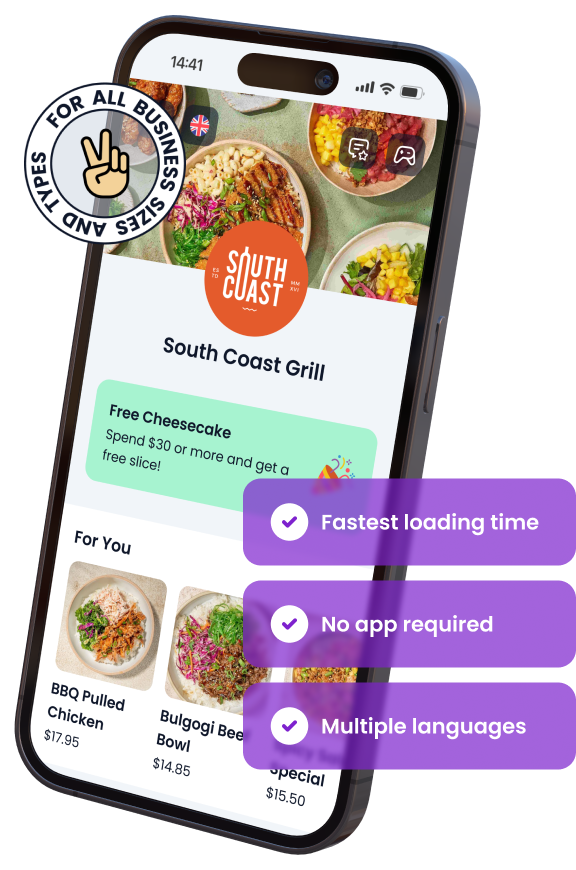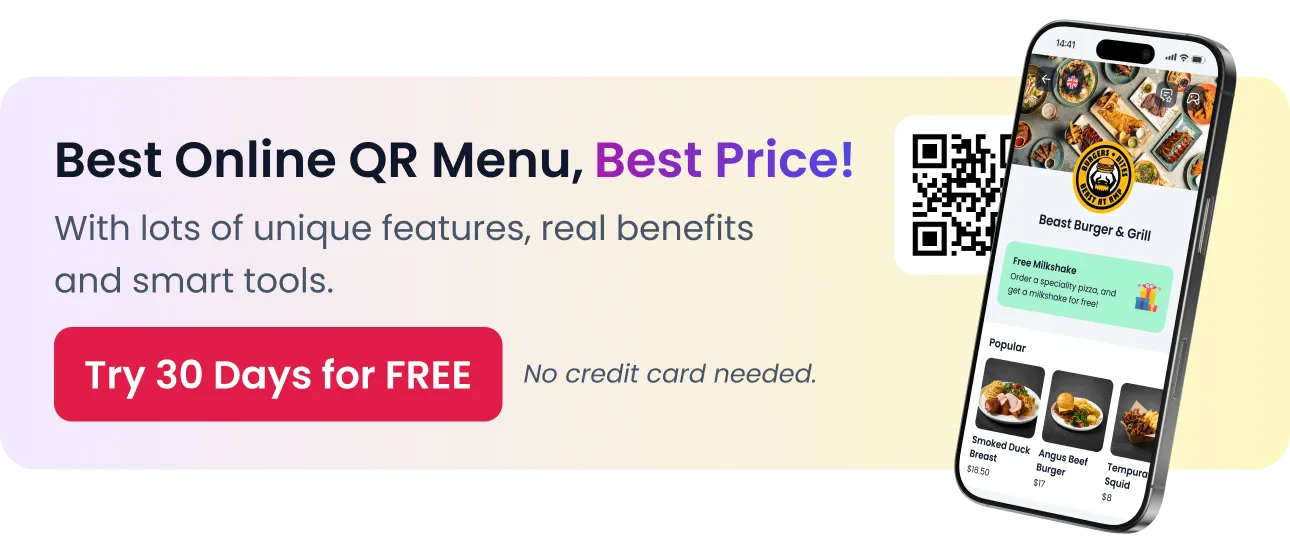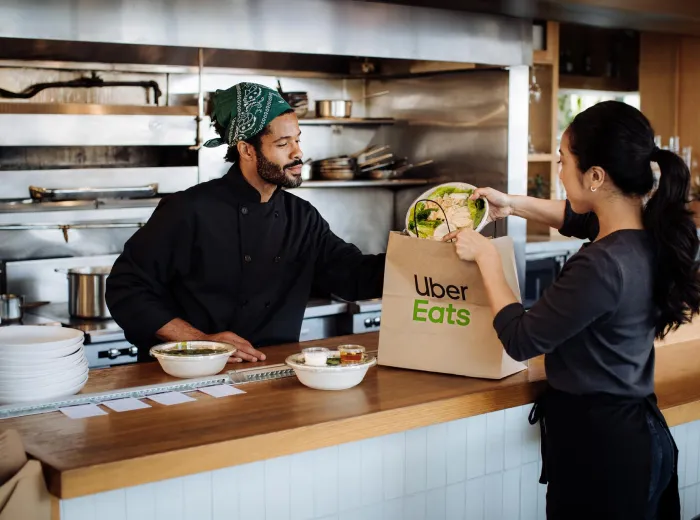

Upselling and Cross-Selling In Restaurants
In the competitive world of restaurants, boosting profitability while enhancing customer satisfaction is a delicate balance. Upselling and cross-selling are powerful techniques that can help you achieve both. By strategically offering customers additional items or suggesting complementary dishes, you can increase the average spend per customer and elevate their dining experience. These practices not only drive higher revenue but also foster customer loyalty and optimize inventory management.
Whether you run a casual cafe or a fine dining establishment, mastering the art of upselling and cross-selling is essential. This article will guide you through the benefits, strategies, and best practices to help you implement these techniques effectively in your restaurant.
Would you like to listen our deep-dive conversation about this article?
What Is Upselling and Cross-Selling in Restaurants?
To truly harness the power of upselling and cross-selling, it’s important to understand what these terms mean and how they differ. Both are essential techniques that can elevate your restaurant’s profitability and customer satisfaction, but they operate in distinct ways. By mastering the fundamentals of each, you can effectively integrate them into your service strategy and maximize their impact on your business.
Definition and Importance
Upselling and cross-selling are two sales techniques that, when used effectively, can significantly enhance a restaurant’s profitability.
Upselling involves encouraging customers to purchase a more expensive item or add-ons to their existing order. For example, suggesting a premium wine instead of the house option or offering to add extra toppings to a pizza are classic upselling tactics.
Cross-selling is the practice of recommending complementary items to a customer’s current order. An example would be suggesting a side salad to go along with a main dish or recommending a dessert to accompany a meal.
Understanding and implementing these techniques is crucial because they can transform a modest sale into a more profitable one without the need for additional customers.
Key Differences Between Upselling and Cross-Selling
While both upselling and cross-selling aim to increase revenue, they do so in different ways:
Upselling focuses on increasing the value of the current order. This might include:
- Offering a larger portion size or premium ingredients.
- Suggesting a higher-priced item from the same category (e.g., a specialty coffee instead of a regular one).
Cross-selling enhances the overall experience by adding complementary products to the customer’s order, such as:
- Pairing a side dish with the main course.
- Recommending a dessert or drink that complements the meal.
These techniques are most effective when applied at the right moment, tailored to the customer’s preferences, and presented as a way to enhance the overall dining experience.
Benefits of Upselling and Cross-Selling for Restaurants
Implementing upselling and cross-selling techniques in your restaurant isn’t just about pushing more products—it’s about strategically enhancing both your revenue and your customer relationships. These methods, when executed thoughtfully, offer a range of benefits that can have a lasting positive impact on your business. From increasing the average ticket size to optimizing inventory management, the advantages are numerous and significant.
Boosting Average Ticket Size
One of the most immediate benefits of upselling and cross-selling is the increase in the average ticket size. By encouraging customers to spend just a little more, restaurants can significantly boost their revenue without needing to attract additional customers.
- Increased Revenue per Customer: Each upsell or cross-sell opportunity can add a few dollars to the total bill, which, when multiplied by the number of customers served, can lead to substantial revenue growth.
- Maximizing Profit Margins: Upselling high-margin items, such as specialty drinks or premium ingredients, can further enhance profitability.
Enhancing Customer Experience
Upselling and cross-selling, when done correctly, can enhance the overall customer experience. Instead of feeling pressured, customers often appreciate recommendations that make their dining experience more enjoyable or introduce them to something new.
- Adding Value: Suggesting a wine that perfectly complements their meal or a dessert that rounds off the dining experience can leave customers more satisfied.
- Building Trust: When staff make thoughtful recommendations that align with the customer’s preferences, it builds trust and enhances the dining experience.
Increasing Customer Loyalty and Retention
Customers who have a positive experience are more likely to return. Effective upselling and cross-selling can contribute to creating memorable dining experiences, which in turn fosters customer loyalty.
- Creating Memorable Experiences: Offering personalized recommendations that enhance the dining experience can make customers feel valued and understood.
- Encouraging Repeat Visits: Satisfied customers are more likely to return, especially if they feel that the restaurant consistently meets or exceeds their expectations.
Optimizing Inventory Management
Upselling and cross-selling can also help restaurants manage their inventory more effectively by moving items that may otherwise go to waste.
- Reducing Waste: Promoting items that are abundant in stock, especially those with a short shelf life, can help reduce food waste.
- Balancing Inventory: By strategically cross-selling certain items, restaurants can ensure that their inventory is used efficiently, minimizing losses and maximizing profit.
Proven Strategies for Effective Upselling
Upselling is an art that requires a deep understanding of both your menu and your customers. The goal is to enhance the dining experience while subtly encouraging customers to spend a bit more. Below are proven strategies that can help your restaurant implement upselling techniques effectively, ensuring that they add value for both the customer and the business.
Training Your Staff
Your staff plays a crucial role in the success of upselling. They must be well-trained to recognize opportunities and deliver suggestions naturally and confidently.
Essential Skills for Successful Upselling:
- Product Knowledge: Staff should be familiar with the entire menu, including ingredients, preparation methods, and the stories behind signature dishes.
- Communication: Training staff to communicate the value and benefits of premium options without being pushy.
- Active Listening: Encouraging staff to listen to customer preferences to tailor their recommendations accordingly.
Role-Playing and Scripts for Staff:
- Role-Playing Scenarios: Regular role-playing sessions can help staff practice upselling in a safe environment.
- Suggested Scripts: Provide scripts for common upselling opportunities, such as offering a premium drink or a dessert suggestion.
Menu Engineering
The design of your menu can significantly influence upselling efforts. By strategically highlighting certain items, you can guide customers toward higher-margin choices.
Highlighting High-Margin Items:
- Visual Cues: Use bold text, boxes, or icons to draw attention to premium items or chef’s specials.
- Descriptive Language: Enhancing menu descriptions to make dishes sound more appealing and worth the extra cost.
Designing Your Menu to Encourage Upselling:
- Strategic Placement: Position high-margin items in areas of the menu that are more likely to catch the eye, such as the top-right corner.
- Bundling Options: Create combos or meal deals that include high-margin add-ons, making them more attractive to customers.
Timing is Everything
Knowing when to upsell is as important as knowing what to upsell. The timing of your suggestion can determine whether a customer is receptive or not.
Identifying the Right Moment to Upsell:
- During the Ordering Process: Suggest add-ons or upgrades as customers make their initial choices.
- At the Table: Train staff to recognize when customers are in a good mood or celebrating, as they may be more open to upselling.
Understanding Customer Cues and Signals:
- Positive Cues: Customers showing interest in the menu or asking questions are prime candidates for upselling.
- Negative Cues: If a customer seems rushed or uninterested, it’s better to avoid upselling attempts.
Personalizing the Offer
Personalization can significantly increase the effectiveness of upselling by making customers feel like the suggestions are tailored specifically for them.
Tailoring Suggestions Based on Customer Preferences:
- Regular Customers: Use knowledge of their past orders to suggest items they might enjoy.
- First-Time Visitors: Ask about their preferences to make informed recommendations.
Leveraging Customer Data for Personalized Upsells:
- Loyalty Programs: Utilize data from loyalty programs to offer personalized upsells based on previous purchases.
- POS Systems: Use POS systems that track customer orders to suggest related items or upgrades.
Using Technology to Aid Upselling
Incorporating technology into your upselling strategy can streamline the process and provide additional opportunities to increase sales.
How POS Systems Can Support Upselling Efforts:
- Automated Suggestions: POS systems can prompt staff to suggest upsells based on the items in a customer’s order.
- Tracking Success: Use POS data to track the effectiveness of different upselling strategies and adjust as needed.
Integrating Mobile Apps and Digital Menus:
- Interactive Menus: Digital menus that highlight premium options or suggest add-ons during the ordering process.
- Push Notifications: Use mobile apps to send personalized offers or upsell opportunities to customers before they arrive.
Mastering Cross-Selling Techniques
Cross-selling is an effective way to enhance the overall dining experience by offering customers complementary items that pair well with their chosen dishes. When done correctly, cross-selling not only increases the total order value but also helps create a more satisfying and memorable dining experience for the customer. Here are some key techniques to master cross-selling in your restaurant.
Creating Complementary Pairings
One of the most straightforward cross-selling techniques is to suggest items that naturally pair well together. This can enhance the customer’s enjoyment of their meal and encourage them to try something new.
How to Pair Dishes and Drinks Effectively:
- Food and Beverage Pairings: Suggest a wine that pairs well with the main course or a dessert that complements the flavors of the meal.
- Side Dishes: Recommend sides that are commonly enjoyed with certain main dishes, like fries with a burger or a salad with pasta.
Examples of Successful Cross-Selling Combinations:
- Cheese Plate with Wine: Offering a selection of cheeses with a bottle of wine.
- Coffee with Dessert: Encouraging customers to order coffee alongside their dessert.
Offering Bundles and Combos
Creating value-added bundles or combo meals is a highly effective cross-selling strategy. Bundles make the decision easier for the customer while increasing the overall sale amount.
Creating Value-Added Packages:
- Meal Combos: Offer a combo meal that includes a main dish, side, and drink at a slight discount compared to ordering each item separately.
- Family or Group Deals: Design bundles that cater to larger groups, such as a pizza package that includes drinks and sides.
How to Price Bundles for Maximum Appeal:
- Perceived Value: Ensure that the customer feels they are getting a deal by slightly discounting the bundle compared to purchasing items individually.
- Clear Pricing: Clearly display the savings customers receive when choosing a bundle over individual items.
Promoting Seasonal Items
Seasonal items offer a perfect opportunity for cross-selling, as they can create a sense of urgency and novelty that encourages customers to try something new.
Leveraging Limited-Time Offers for Cross-Selling:
- Seasonal Dishes: Promote dishes that feature seasonal ingredients, which customers can only enjoy for a limited time.
- Holiday Specials: Offer special menus or items during holidays that naturally encourage customers to add more to their orders.
Highlighting Seasonal Ingredients and Specials:
- Menu Inserts: Use menu inserts or table tents to showcase seasonal specials.
- Server Recommendations: Train staff to highlight seasonal items during the ordering process.
Utilizing Digital Menus and QR Codes
The digital revolution in dining presents new avenues for effective cross-selling. Digital menus and QR codes can be powerful tools to suggest additional items to customers.
How Digital Tools Can Enhance Cross-Selling:
- Interactive Features: Use digital menus that suggest complementary items as customers make their selections.
- Dynamic Content: Display seasonal specials or popular combinations directly on the digital menu.
The Role of Visuals and Descriptions in Cross-Selling:
- High-Quality Images: Include appealing images of complementary items to entice customers.
- Detailed Descriptions: Use mouth-watering descriptions to make complementary items sound irresistible.
Implementing a Culture of Upselling and Cross-Selling
Creating a culture that embraces upselling and cross-selling is essential for the sustained success of these strategies. It requires commitment from management and engagement from the entire team. By fostering a customer-centric approach, setting clear goals, and rewarding staff for their efforts, you can embed upselling and cross-selling into the daily operations of your restaurant.
Encouraging a Customer-Centric Approach
Building a customer-centric culture ensures that upselling and cross-selling feel natural and genuinely enhance the dining experience.
Making Upselling Natural and Customer-Focused:
- Subtle Suggestions: Encourage staff to make recommendations as part of a genuine conversation rather than as a sales pitch.
- Focus on Benefits: Emphasize how the suggested items can enhance the customer’s meal, such as pairing a wine that complements their main dish.
Training Staff to Listen and Respond to Customer Needs:
- Active Listening Skills: Teach staff to pay attention to customer preferences, dietary restrictions, and feedback.
- Responsive Recommendations: Based on what customers express, tailor suggestions that align with their tastes and needs.
Setting Goals and Monitoring Performance
Establishing clear goals and regularly monitoring performance helps ensure that upselling and cross-selling strategies are effective and aligned with business objectives.
KPIs to Measure Upselling and Cross-Selling Success:
- Average Order Value (AOV): Track the average spend per customer before and after implementing upselling techniques.
- Conversion Rates: Measure the percentage of customers who accept upsell or cross-sell offers.
- Revenue from Upsells and Cross-Sells: Monitor the additional revenue generated specifically from these strategies.
| KPI | Description | Target |
|---|---|---|
| Average Order Value (AOV) | Average spend per customer | Increase by 10% |
| Conversion Rate | Percentage of successful upsells/cross-sells | 20% |
| Additional Revenue | Extra revenue from upsells and cross-sells | $500/month |
Using Feedback to Refine Strategies:
- Customer Feedback: Collect and analyze feedback to understand how customers perceive upselling efforts.
- Staff Input: Encourage staff to share their experiences and suggestions for improvement.
- Adjust Strategies: Use the feedback to tweak menu items, training programs, or upselling approaches.
Rewarding and Incentivizing Staff
Motivating your staff through rewards and incentives can significantly enhance their commitment to upselling and cross-selling initiatives.
Creating a Reward System for Successful Upsells:
- Commission-Based Rewards: Offer a small commission or bonus for each successful upsell.
- Recognition Programs: Publicly recognize top performers in staff meetings or on a “wall of fame.”
Examples of Effective Staff Incentives:
- Monetary Bonuses: Provide additional pay for exceeding upsell targets.
- Non-Monetary Rewards: Offer perks such as gift cards, extra time off, or special privileges.
- Competitions: Organize friendly competitions with prizes for the highest number of upsells in a given period.
| Incentive Type | Description | Example |
|---|---|---|
| Monetary Bonus | Extra pay for each successful upsell | $1 per upsell |
| Recognition | Public acknowledgment of top performers | “Employee of the Month” award |
| Competitions | Friendly contests with prizes | Monthly upsell challenge |
| Non-Monetary Rewards | Perks for high performers | Gift cards, extra break time |
By implementing these strategies, you can cultivate a supportive environment where upselling and cross-selling become integral parts of your restaurant’s service ethos. This not only drives revenue growth but also ensures that your customers receive personalized and enhanced dining experiences.
Common Mistakes and How to Avoid Them
While upselling and cross-selling can significantly enhance your restaurant’s revenue and customer satisfaction, there are common pitfalls that can undermine these efforts. Avoiding these mistakes is crucial to ensure that your strategies are both effective and well-received by customers.
Overdoing the Upsell
One of the most common mistakes is pushing upselling too aggressively, which can make customers feel uncomfortable or pressured.
Recognizing When to Stop:
- Customer Resistance: Pay attention to verbal and non-verbal cues that indicate the customer is not interested, such as short responses or avoiding eye contact.
- Respecting Boundaries: Train staff to gracefully back off if the customer declines an upsell, ensuring they still feel valued and respected.
Balancing Sales with Customer Satisfaction:
- Subtlety is Key: Ensure that upsell suggestions are made in a way that feels natural and is genuinely aimed at enhancing the customer’s experience.
- Focus on Quality: Prioritize suggesting items that truly add value to the meal rather than simply pushing higher-priced options.
Ignoring Customer Preferences
Another mistake is not taking the customer’s preferences into account, which can lead to irrelevant or inappropriate suggestions.
The Risks of Pushing Irrelevant Items:
- Alienating Customers: Recommending items that don’t align with the customer’s tastes can make them feel misunderstood and less likely to return.
- Wasted Effort: Irrelevant suggestions are less likely to be accepted, wasting both the server’s and the customer’s time.
Strategies to Ensure Relevance in Suggestions:
- Ask First: Encourage staff to ask questions about the customer’s preferences before making recommendations.
- Tailored Recommendations: Use customer data or past orders to personalize suggestions, making them more likely to be accepted.
Failing to Train Your Team Properly
Even the best upselling and cross-selling strategies can fail if your staff is not properly trained to execute them.
The Consequences of Unprepared Staff:
- Inconsistent Service: Without proper training, staff may apply upselling and cross-selling techniques inconsistently, leading to varied customer experiences.
- Missed Opportunities: Untrained staff may miss key moments to make effective recommendations, resulting in lost revenue.
Steps to Ensure Thorough Training:
- Comprehensive Training Programs: Develop training sessions that cover not only the mechanics of upselling but also the importance of customer-centric service.
- Ongoing Support: Provide continuous training and refresher courses to ensure that all staff members are up-to-date with best practices.
| Common Mistake | Impact | Solution |
|---|---|---|
| Overdoing the Upsell | Customer feels pressured or uncomfortable | Train staff to recognize when to stop |
| Ignoring Customer Preferences | Irrelevant suggestions, customer alienation | Ask about preferences, tailor recommendations |
| Failing to Train Staff Properly | Inconsistent service, missed opportunities | Implement comprehensive and ongoing training |
By understanding and avoiding these common mistakes, your restaurant can implement upselling and cross-selling strategies that enhance the customer experience and boost your bottom line without alienating your clientele.
Case Studies and Real-Life Examples
Learning from the experiences of other restaurants can provide valuable insights into what works and what doesn’t when it comes to upselling and cross-selling. Below are some case studies and real-life examples that highlight successful strategies as well as lessons learned from failed attempts.
Success Stories from Leading Restaurants
Some restaurants have mastered the art of upselling and cross-selling, resulting in increased revenue and improved customer satisfaction. Here are a few examples:
Case Study 1: The Upscale Steakhouse
- Strategy: This restaurant trained its staff extensively on pairing premium wines with their steak offerings. Servers were encouraged to recommend specific wines based on the customer’s choice of steak.
- Outcome: The restaurant saw a 20% increase in wine sales, with customers reporting higher satisfaction due to the enhanced dining experience.
- Key Takeaway: Pairing recommendations that align with the main dish not only boosts sales but also enhances customer enjoyment.
Case Study 2: The Casual Pizza Chain
- Strategy: The pizza chain introduced a digital menu that suggested popular add-ons like extra cheese or a side of garlic bread during the online ordering process.
- Outcome: Cross-selling through the digital menu led to a 15% increase in average order value, with minimal additional effort from staff.
- Key Takeaway: Leveraging technology to suggest complementary items during the ordering process can significantly boost cross-selling success.
Case Study 3: The Family-Owned Cafe
- Strategy: This cafe created a combo deal that included a coffee, pastry, and a small fruit cup, which was promoted heavily during the morning rush.
- Outcome: The combo deal became a customer favorite, leading to a 25% increase in morning sales.
- Key Takeaway: Bundling popular items at a slight discount can attract more customers and increase overall sales.
Lessons Learned from Failed Attempts
Not all upselling and cross-selling efforts are successful. Here are some examples of what not to do:
Case Study 4: The Overzealous Fine Dining Restaurant
- Mistake: This restaurant encouraged its servers to upsell at every opportunity, often pushing high-priced items that didn’t align with the customer’s preferences.
- Outcome: Customers felt pressured and began leaving negative reviews, resulting in a noticeable drop in repeat business.
- Lesson Learned: Aggressive upselling can backfire, leading to customer dissatisfaction and potential damage to your restaurant’s reputation. It’s crucial to ensure that upselling is done subtly and with the customer’s preferences in mind.
Case Study 5: The Tech-Heavy Fast Food Chain
- Mistake: The chain implemented an overly complex digital ordering system that bombarded customers with multiple cross-sell options at every step of the ordering process.
- Outcome: The system frustrated customers, leading to abandoned orders and complaints. The chain had to roll back some of the cross-selling features.
- Lesson Learned: While technology can enhance cross-selling efforts, it’s important to ensure that the process remains user-friendly and doesn’t overwhelm the customer.
Real-World Takeaways
Examining both successes and failures in upselling and cross-selling provides several important takeaways:
- Subtlety is Crucial: Successful upselling enhances the customer experience without making them feel pressured.
- Leverage Technology Wisely: Digital tools can be powerful, but they should be used in a way that simplifies the customer journey, not complicates it.
- Tailored Recommendations Win: Understanding your customer’s preferences and making relevant suggestions can significantly improve the effectiveness of upselling and cross-selling.
| Case Study | Strategy/Mistake | Outcome | Key Takeaway/Lesson |
|---|---|---|---|
| Upscale Steakhouse | Pairing wines with steaks | 20% increase in wine sales | Align recommendations with main dish |
| Casual Pizza Chain | Digital menu suggestions | 15% increase in average order value | Use technology to suggest add-ons |
| Family-Owned Cafe | Combo deal promotion | 25% increase in morning sales | Bundle popular items to boost sales |
| Overzealous Fine Dining Restaurant | Aggressive upselling | Negative reviews, drop in repeat business | Ensure upselling is subtle and customer-focused |
| Tech-Heavy Fast Food Chain | Overly complex digital system | Abandoned orders, customer frustration | Keep digital cross-selling simple and user-friendly |
These case studies illustrate the potential rewards and risks associated with upselling and cross-selling. By learning from these examples, you can refine your strategies to better serve your customers and grow your business.
Future Trends in Upselling and Cross-Selling
As the restaurant industry continues to evolve, so do the strategies for upselling and cross-selling. Staying ahead of these trends can give your restaurant a competitive edge, allowing you to maximize revenue and enhance the customer experience in innovative ways. Below are some of the key trends shaping the future of upselling and cross-selling in the restaurant industry.
The Impact of AI and Machine Learning
Artificial Intelligence (AI) and Machine Learning (ML) are becoming increasingly important tools in the hospitality industry, offering personalized recommendations and data-driven insights that can significantly enhance upselling and cross-selling efforts.
How AI and ML Are Transforming Upselling:
- Personalized Recommendations: AI can analyze customer data to suggest items that align with their preferences, dietary restrictions, and past orders.
- Dynamic Pricing: ML algorithms can adjust prices based on demand, time of day, or inventory levels, making it easier to upsell high-margin items at the right moment.
Examples of AI-Powered Upselling:
- Smart Menus: Digital menus that use AI to suggest popular or complementary items based on what the customer is currently ordering.
- Predictive Analytics: AI-driven systems that forecast customer behavior and preferences, enabling more targeted and effective upselling.
Sustainable and Ethical Upselling
As consumers become more conscious of sustainability and ethical considerations, restaurants are adapting their upselling and cross-selling strategies to reflect these values.
The Role of Sustainability in Future Sales Techniques:
- Promoting Sustainable Choices: Upselling items that are locally sourced, organic, or have a lower carbon footprint can appeal to environmentally-conscious customers.
- Reducing Waste: Cross-selling strategies that encourage customers to order items made from ingredients that might otherwise go to waste can be both profitable and environmentally friendly.
Examples of Sustainable Upselling:
- Ethical Menu Options: Highlighting dishes made from sustainable ingredients and suggesting them as upsell options.
- Zero-Waste Initiatives: Encouraging customers to order meal add-ons or sides that help utilize surplus ingredients, reducing overall food waste.
The Rise of Digital and Contactless Upselling
The shift towards digital and contactless dining experiences, accelerated by the COVID-19 pandemic, has led to new opportunities for upselling and cross-selling.
How Digital Tools Are Enhancing Upselling:
- Contactless Ordering Systems: Digital platforms allow for seamless upselling, with prompts for add-ons or upgrades built directly into the ordering process.
- QR Code Menus: These menus can dynamically update to feature seasonal items, limited-time offers, or high-margin products, encouraging spontaneous upselling and cross-selling.
Trends in Digital Upselling:
- Augmented Reality (AR): Some restaurants are beginning to explore AR, where customers can visualize dishes or drinks before ordering, making them more likely to add these items to their order.
- Mobile App Integration: Apps that track customer preferences and past orders can offer personalized upselling options, sent directly to the customer’s phone.
Upselling with a Focus on Health and Wellness
As health and wellness continue to be major trends in consumer behavior, restaurants are incorporating these themes into their upselling strategies.
Leveraging Health Trends in Upselling:
- Healthy Upgrades: Suggesting healthier alternatives or add-ons, such as swapping fries for a salad or adding a superfood ingredient to a dish.
- Wellness-Driven Combos: Creating combo deals that focus on nutritious, balanced meals, appealing to health-conscious customers.
Examples of Health-Focused Upselling:
- Nutrient-Rich Add-Ons: Offering vitamin boosts in smoothies or protein additions to salads.
- Mindful Eating Suggestions: Recommending dishes that align with popular diets, such as keto or vegan, as part of an upsell.
| Future Trend | Description | Impact on Upselling and Cross-Selling |
|---|---|---|
| AI and Machine Learning | Personalized recommendations and dynamic pricing | More targeted, data-driven upselling opportunities |
| Sustainable and Ethical Upselling | Focus on environmentally friendly and ethical options | Aligning upselling with consumer values, reducing waste |
| Digital and Contactless Upselling | Use of contactless systems and QR codes for upselling | Seamless, tech-driven upselling and cross-selling |
| Health and Wellness Focus | Emphasizing nutritious and wellness-oriented options | Catering to health-conscious customers with relevant upsells |
As these trends continue to develop, restaurants that adapt their upselling and cross-selling strategies accordingly will be better positioned to meet evolving customer expectations and drive growth in a rapidly changing industry.
Mastering the techniques of upselling and cross-selling is not just about increasing your restaurant’s revenue—it’s about creating a more personalized and enhanced dining experience for your customers. By strategically implementing these practices, you can boost your average ticket size, optimize your inventory, and build stronger customer loyalty. However, the key to success lies in executing these strategies with care, ensuring they are customer-centric, well-timed, and aligned with your restaurant’s values.
As the restaurant industry continues to evolve, staying ahead of trends like AI-driven personalization, sustainable practices, and digital upselling tools will be crucial. By avoiding common pitfalls and fostering a culture of thoughtful upselling and cross-selling, you can not only increase profitability but also create a dining experience that keeps customers coming back. Remember, the most effective upselling and cross-selling strategies are those that prioritize the customer’s needs and enhance their overall satisfaction.
With the right approach, upselling and cross-selling can become powerful tools that drive both business growth and customer satisfaction, helping your restaurant thrive in a competitive market.
ABOUT THE AUTHOR
Erkin Coban
Your Customers Deserve The Best
And we got Menuviel for them.
The fastest and easy-to-use online QR menu with 12+ unique features. Choose Menuviel and elevate your service quality to the next level.
Use free for the first 30 days.

In This Article

Free AI Tools for Restaurants
TRY NOW ➜

Add custom options to your menu items
Let customers choose sizes, add-ons, or extras with easy-to-set modifiers under each item.







